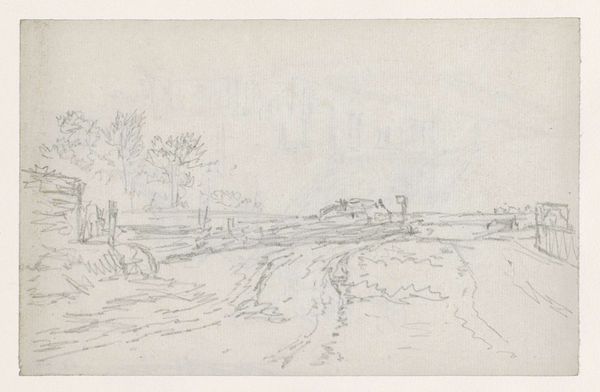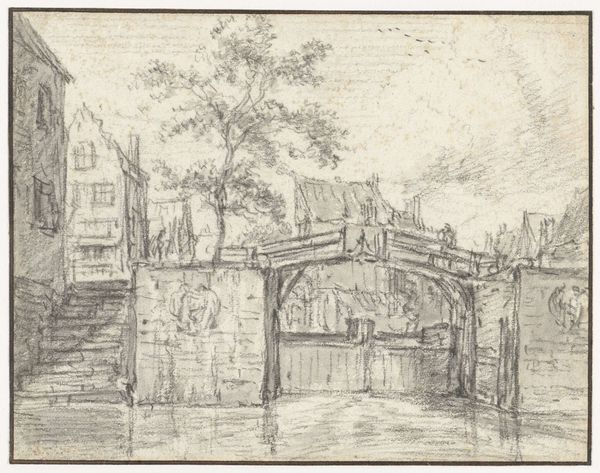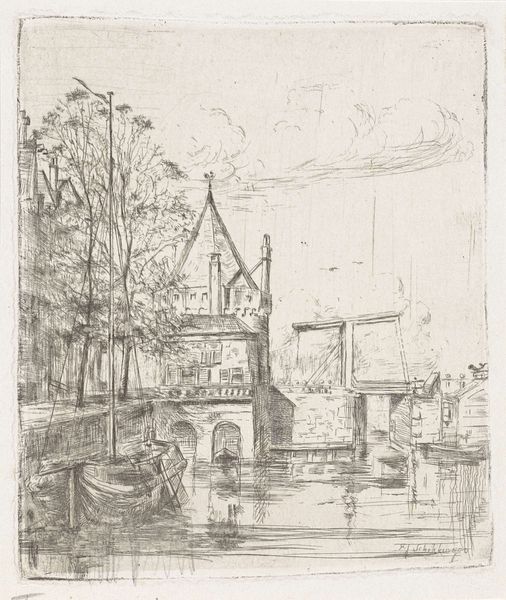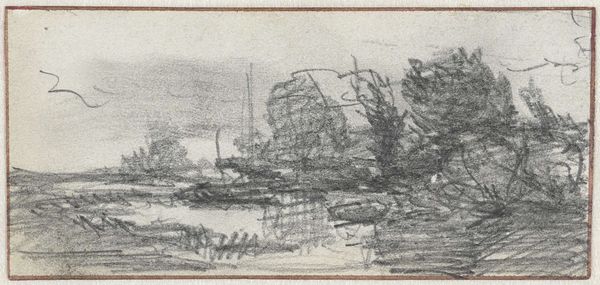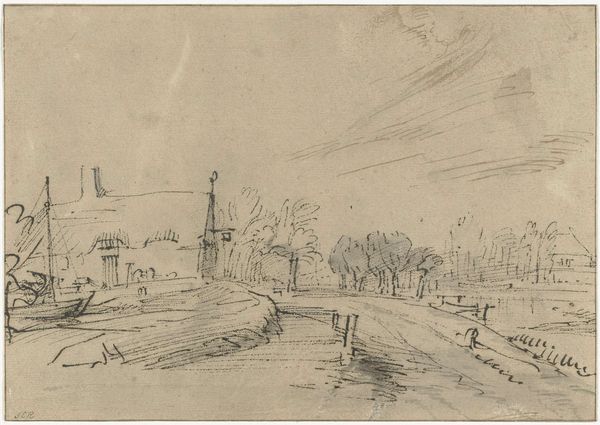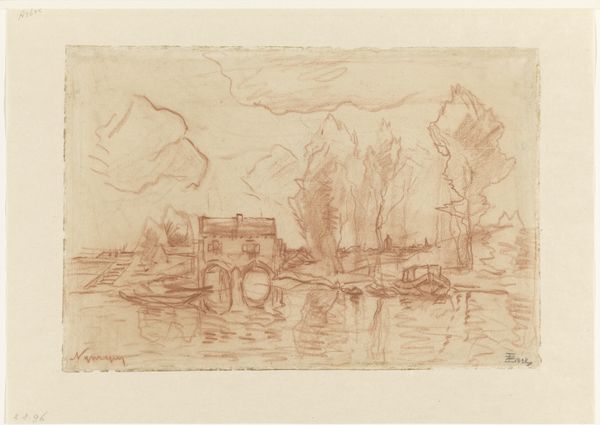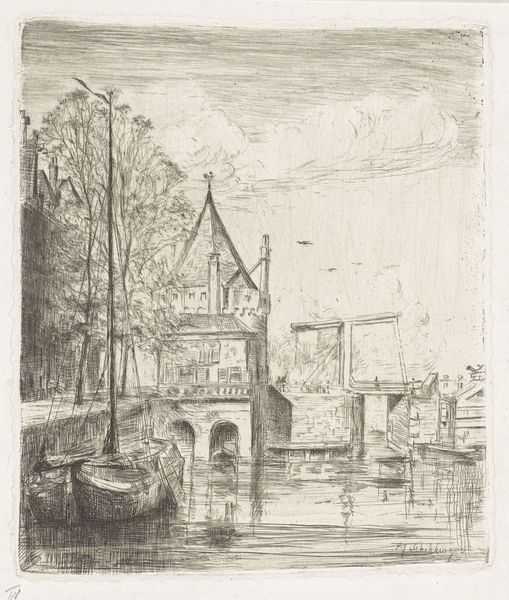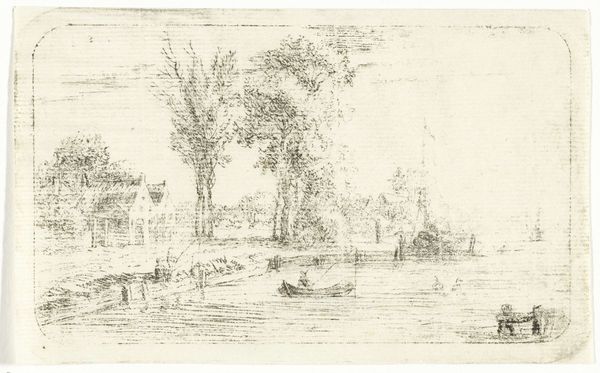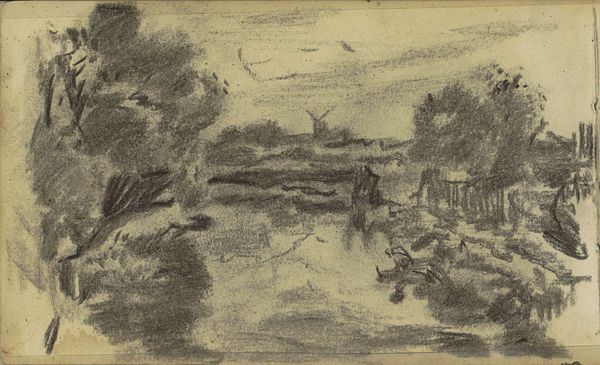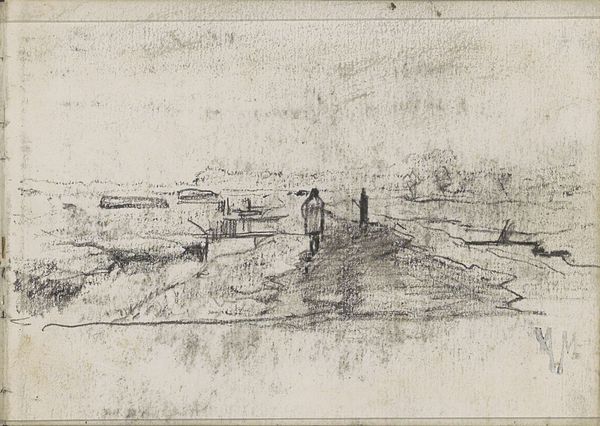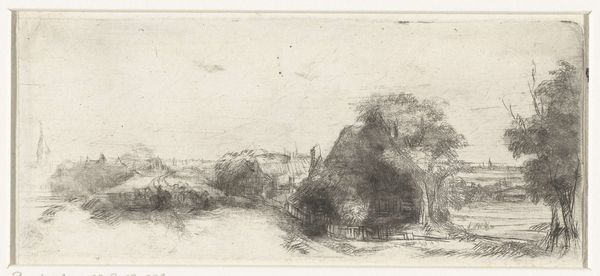
drawing, graphite
#
drawing
#
baroque
#
dutch-golden-age
#
landscape
#
graphite
#
sketchbook drawing
#
cityscape
Dimensions: height 86 mm, width 164 mm
Copyright: Rijks Museum: Open Domain
Editor: This is Rembrandt van Rijn’s "View of the Nieuwezijds Voorburgwal," created around 1647 using graphite. It's currently held at the Rijksmuseum. It feels like a quick, fleeting impression – a snapshot in time. What’s your take on it? Curator: This drawing offers a fascinating glimpse into the social function of art in 17th-century Amsterdam. Unlike commissioned portraits of the wealthy or grand history paintings, this cityscape speaks to a growing interest in the everyday life of the city. Think of it as a kind of early modern form of street photography. Editor: Street photography, I like that! So, it’s less about artistic ideals and more about representing the tangible world? Curator: Precisely. The rising merchant class in Amsterdam had different priorities for art. There was a demand for genre scenes and landscapes which mirrored their own lives, and this little graphite drawing participates in this larger shift towards secularization in painting and art collecting practices, marking how society impacted Rembrandt's market and stylistic decisions. Does this perspective change your initial interpretation? Editor: It does. It makes me think about who would have been able to see and appreciate this image at the time, beyond Rembrandt himself. Was it a widely circulated work? Curator: Most likely this drawing was part of a personal collection or sketchbook. However, these kinds of images—and particularly Rembrandt’s prints which often depict similar themes—helped construct a visual vocabulary for the city itself. This is interesting, because Rembrandt and his art becomes linked to the civic identity. Editor: So, the image plays a role in shaping Amsterdam’s identity? Curator: Exactly! It helps to codify what Amsterdam *is*, who it *is for,* and its social life and values. A quick sketch gains significance through the historical lens of its viewers and cultural context. Editor: This gives me a new way to appreciate the drawing. Thanks for unpacking that. Curator: My pleasure. It is amazing how socio-political perspectives transform one's view of an unassuming work.
Comments
rijksmuseum about 2 years ago
⋮
In Rembrandt’s time, the Nieuwezijds Voorburgwal was still an imposing canal. He stood here with his sketchbook, facing south. With considerable virtuosity and speed, he drew the houses and trees on both sides of the canal and the Weessluis, the bridge between the St. Luciënsteeg and the Rosmarijnsteeg. He suggested the gentle motion of the water’s surface with just a few chalk strokes.
Join the conversation
Join millions of artists and users on Artera today and experience the ultimate creative platform.
